Tasks are ready to run, include all required training paradigms, and can easily be modified as required.
| PD/rev | PAL | VMCL | 5CSRT | Auto | TUNL | LD | Ext | 5CPT | PR/ERC | 4CGT | rCPT | DD | PRL | |
| Huntington's | ||||||||||||||
| Schizophrenia | ||||||||||||||
| Alzheimer's | ||||||||||||||
| Parkinson's | ||||||||||||||
| Depression | ||||||||||||||
| ADHD | ||||||||||||||
| OCD | ||||||||||||||
| Bipolar Disorder | ||||||||||||||
| Motivation | ||||||||||||||
| Impulsivity | ||||||||||||||
| Learning and Memory | ||||||||||||||
| Location Discrimination/Pattern Separation | ||||||||||||||
| Working Memory | ||||||||||||||
| Distraction | ||||||||||||||
| Attention | ||||||||||||||
| Learning | ||||||||||||||
| Decision Making | ||||||||||||||
| Cognitive Flexibility and Response Inhibition | ||||||||||||||
| Emotional Cognition and Responding to Reinforcement | ||||||||||||||
| Executive Function |
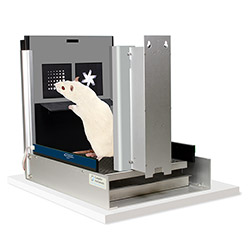
Model 89540A-R
Adapted for rats, this reversal learning task requires inhibition of prepotent responses and is known to be dependent on the prefrontal cortex.
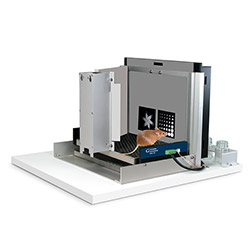
Model 89540A
Adapted for mice, this reversal learning task requires inhibition of prepotent responses and is known to be dependent on the prefrontal cortex.
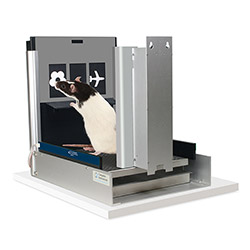
Model 89541A-R
Adapted for rats, this is a hippocampal task. In humans, this task has proved to be highly effective for the early detection of Alzheimer's disease.
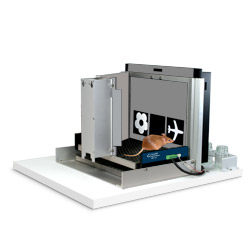
Model 89541A
Adapted for mice, this is a hippocampal task. In humans, this task has proved to be highly effective for the early detection of Alzheimer's disease.
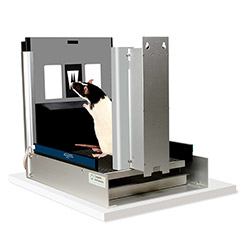
Model 89542A-R
Adapted for rats, this is a habit or stimulus-response task in which the rodent learns a conditional rule.
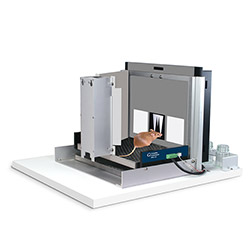
Model 89542A
Adapted for mice, this is a habit or stimulus-response task in which the rodent learns a conditional rule.
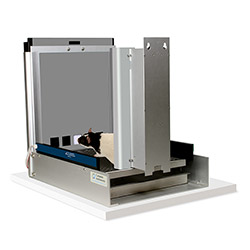
Model 89543A-R
Adapted for rats, this task is sensitive to cortical manipulations, especially those involving prefrontal cortex, and is highly dependent on cholinergic transmission.
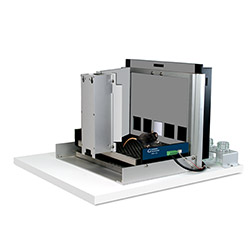
Model 89543A
Adapted for mice, this task is sensitive to cortical manipulations, especially those involving prefrontal cortex, and is highly dependent on cholinergic transmission.
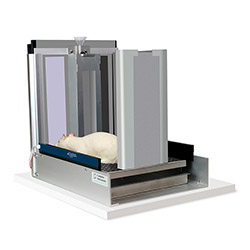
Model 89544A-R
Adapted for rats, this task measures a Pavlovian response to the screen. This is a very rapidly administered test of simple classical conditioning that is dependent on a reward system centered on the ventral striatum.
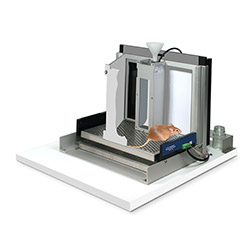
Model 89544A
Adapted for mice, this task measures a Pavlovian response to the screen. This is a very rapidly administered test of simple classical conditioning that is dependent on a reward system centered on the ventral striatum.
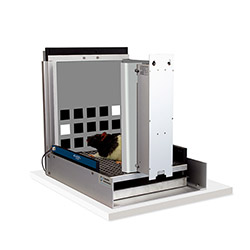
Model 89545A-R
Adapted for rats, this is a working memory task. TUNL is a delayed nonmatching-to-place task that prevents the mediating strategies associated with the equivalent lever task.
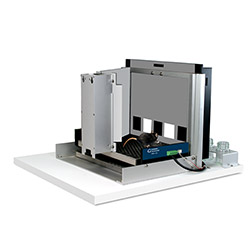
Model 89545A
Adapted for mice, this is a working memory task. TUNL is a delayed nonmatching-to-place task that prevents the mediating strategies associated with the equivalent lever task.
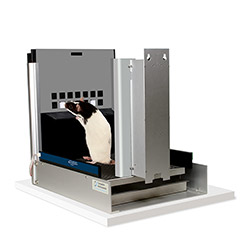
Model 89546A-R
Adapted for rats, this is a spatial memory task with a reversal learning component. It is sensitive to hippocampal lesions and associated with glutamate receptor regulation and signaling.
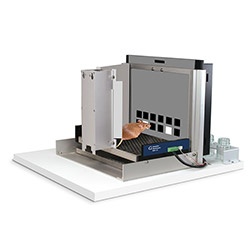
Model 89546A
Adapted for mice, this is a spatial memory task with a reversal learning component. It is sensitive to hippocampal lesions and associated with glutamate receptor regulation and signaling.
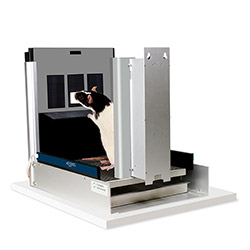
Model 89547A-R
Adapted for rats, this is a simple, but powerful, test of behavioral inhibition.
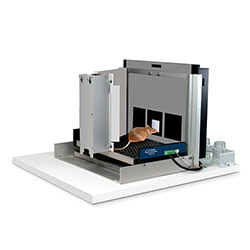
Model 89547A
Adapted for mice, this is a simple, but powerful, test of behavioral inhibition.

Model 89548A-R
Adapted for rats, this go/no-go task measures both attentional and inhibitory systems within a single task paradigm, enabling the assessment of vigilance.
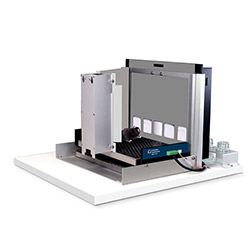
Model 89548A
Adapted for mice, this go/no-go task measures both attentional and inhibitory systems within a single task paradigm, enabling the assessment of vigilance.

Model 89549A-R
Adapted for rats, this touch screen task has been shown equivalent to those performed with levers or nose-poke holes in measuring motivation and reward-related decision making.

Model 89549A
Adapted for mice, this touch screen task has been shown equivalent to those performed with levers or nose-poke holes in measuring motivation and reward-related decision making.
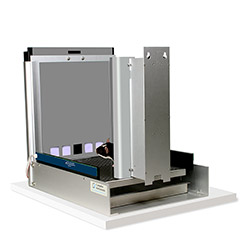
Model 89550A-R
Adapted for rats, this test is based on the Iowa Gambling Task, sensitive to serotonergic and dopaminergic agents.
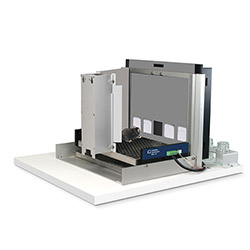
Model 89550A
Adapted for mice, this test is based on the Iowa Gambling Task, sensitive to serotonergic and dopaminergic agents.
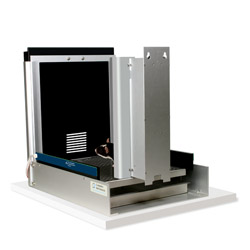
Model 89551A-R
Adapted for rats. In this Rodent CPT (Image) task, 5 different images are shown briefly, one at a time and in a random order. One of the images is designated the target stimulus. In order to obtain reward, the subject must touch the target stimulus and withhold from touching the non-target stimuli.
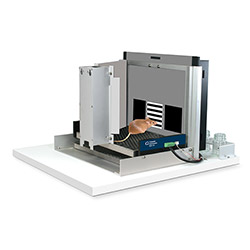
Model 89551A
Adapted for mice. In this Rodent CPT (Image) task, 5 different images are shown briefly, one at a time and in a random order. One of the images is designated the target stimulus. In order to obtain reward, the subject must touch the target stimulus and withhold from touching the non-target stimuli.
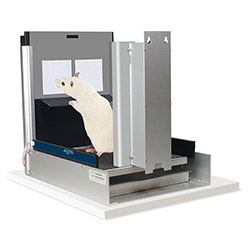
Model 89552A-R
Adapted for rats. As a measure of impulsivity, the Delay Discounting Task (DD) measures how long the rodent is prepared to wait for a larger reward.
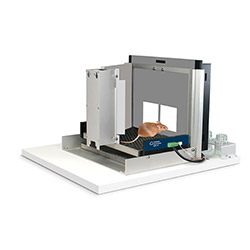
Model 89552A
Adapted for mice. As a measure of impulsivity, the Delay Discounting Task (DD) measures how long the rodent is prepared to wait for a larger reward.

Model 89553A-R
Adapted for rats. Designed to measure sensitivity to valence feedback information, PRL is sensitive to serotonergic manipulations, suggesting this test may be used to study depression-relevant behavior.
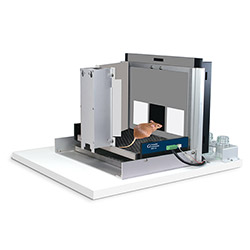
Model 89553A
Adapted for mice. Designed to measure sensitivity to valence feedback information, PRL is sensitive to serotonergic manipulations, suggesting this test may be used to study depression-relevant behavior.